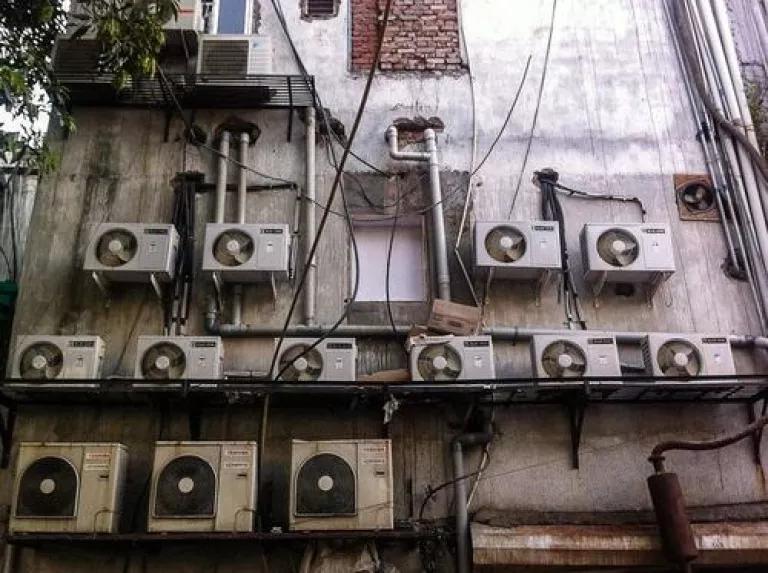Addressing Climate Change: Phasing Down the Use of Super Green House Gases, Hydrofluorocarbons, in India

India has a significant opportunity to phasing down the use of hydrofluorocarbons (HFCs), one of the six greenhouse gases. HFCs are very potent contributors to global warming, most prominently being used in the room and mobile air conditioning sectors worldwide. As markets for room and vehicle air conditioning grow, HFC use is expected to increase dramatically.
Recognizing the threat posed by HFCs, the Ministry of Environment, Forests and Climate Change (MOEFCC) invited NRDC with partners, the Council on Energy, Environment and Water (CEEW) to convene a stakeholder roundtable in New Delhi, to discuss the top priority challenges in planning and executing an effective HFC phase down in India.

Biggest Opportunities for India
India has an immediate opportunity in managing its economic growth and human development keeping in mind the growing demands on India's already stressed energy grid. As discussed in "Reducing Stress on India's Energy Grid: The Power Sector Benefits of Transitioning to Lower Global Warming Potential and Energy Efficient Refrigerants in Room Air Conditioners", a key means for increasing the energy efficiency of air conditioning units is through changing the refrigerant used as coolants in AC units along with improving the energy efficiency components. While ensuring that India's peak demand is manageable, such alternatives also India to take advantage of the energy saving opportunity in line with the new government's goals of energy security and universal access.
Another significant opportunity, one that India is making progress on, is to phase down HFCs under the Montreal Protocol. As the Indian government and key experts have identified, amending the Protocol now has benefit of aligning a phase down of HFCs with the accelerated phase out of hydrochlorofluorocarbons (HCFCs) currently underway. Alignment of the HFC and HCFC regimes reduces the risk of incurring double transition costs from first switching to high-GWP HFCs and then subsequently switching to lower-GWP alternatives and seek support from the multilateral fund to leapfrog from HCFCs to low GWP HFCs.
An added benefit is that India can consider an HFC phase down under the MP as part of its "intended nationally determined contribution" to the multilateral treaty on climate change - the UNFCCC. There is interest from more than 108 Parties to phase down HFCs under the Montreal Protocol. The Indian government also recently took a leading role in global efforts to address climate change by proposing an HFC phase-down amendment to the Montreal Protocol. The proposed amendment, put forward on 16th April, 2015, would phase down production and consumption of these powerful heat-trapping gases.
Lastly, domestic action in countries worldwide is triggering innovation. Rooms and vehicles with air conditioners are global markets in which international companies compete for market share and achieve economies of scale. Many companies design products that satisfy the most stringent energy efficiency, safety, and environmental standards so they can be freely marketed worldwide. Current and emerging market trends and regulations in Australia, the European Union, the United States, and elsewhere are moving toward refrigerants with a lower impact on climate change. Moving to low GWP HFCs gives India the opportunity to open up its products to an innovating export market and a significant business opportunity looking ahead.
Indian Stakeholder Views
As part of the stakeholder roundtable that was convened in New Delhi this week, the Indian government and industry perceive the following as key challenges in agreeing to a phase down
- Availability of alternatives and access to technology: particularly application patents of alternatives and the associated costs
- Safety of alternatives and standards: levels of flammability of alternatives and standards that appropriate for the local conditions for India. The government is also keen developing programmes for development of skills in the service sector in India to ensure that safety standards are upheld especially during handling of the refrigerant.
The Indian government and industry signalled a willingness to engage and seek knowledge support in trying to find solutions to these challenges.
Overall, India has an opportunity to start adopting more energy efficient and climate friendly refrigerant alternatives with financing from the Montreal Protocol Multilateral Fund, avoid higher costs of transitioning later and gain greater access to domestic and foreign markets that are moving away from HFCs. The government recognizes this opportunity and is making progress in driving action on HFCs globally by proposing its own amendment. Indian companies have already begun leading the market in commercializing next-generation room air conditioning that uses safe refrigerants with benefits of energy efficiency. India can take advantage of an emerging market,asd prevent a major share of future climate-changing emissions before they even occur, and help India meet its goals to be energy secure.
Photos: NRDC
